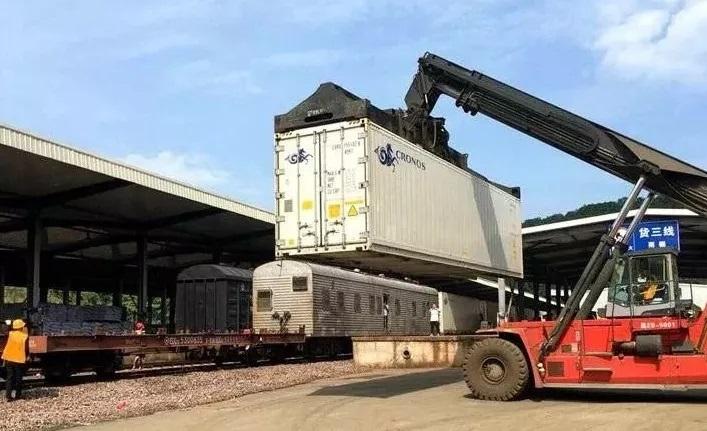 main problems in the traditional mode
main problems in the traditional mode
- The transportation process is opaque: in order to reduce the cost, the third-party transportation enterprise may shut down the refrigerator in the transportation process and turn on the refrigerator when it arrives at the destination quickly, which cannot achieve the whole cold chain. And when the goods are delivered, although the surface is frozen well, the quality has actually declined.
- The storage process is not transparent: due to cost considerations, the storage enterprise may use the low power period at night to start up, and the equipment is shut down during the day, resulting in the temperature fluctuation of the cold storage exceeding 10 ℃, and the food quality is reduced. The traditional monitoring method is to use a temperature recorder to measure, which requires network and human intervention to export data, and the data is in the hands of the carrier and the storage enterprise. If the owner wants to obtain data, it is difficult. Maintenant, some large domestic pharmaceutical companies and food enterprises prefer to invest a lot of money to build their own refrigerators and transport fleets, rather than use the third-party cold chain logistics enterprise services, which is obviously very expensive.
- Invalid handling: when the transport enterprise picks up the goods, if it can’t transport them with pallets, the workers need to transport the products from the pallets to the refrigerated trucks; after the goods arrive at the storage or retail enterprises, the workers need to unload the goods from the refrigerated trucks and put them on the pallets, which is easy to cause packaging damage and affect the quality of the goods.
- Low efficiency of warehouse management: paper documents shall be provided before entering and leaving the warehouse, and then manually entered into the computer, which is inefficient and has high error rate.
- Waste of human resources: loading and unloading of goods and palletizing need a lot of manpower.
- Optimization strategy
- Build a modern railway cold chain logistics center to provide a full range of services from transportation, espace de rangement, tri, Distribution, etc.
- Based on the application of RFID technology, the pallet is introduced into the field of cold chain logistics (C'est, the electronic label is built on the pallet). It is very important to realize the electronic information of pallet for improving the level of logistics management and reducing the cost of logistics.
- Introduce the concept of pallet sharing. Provide or lease the pallet embedded with temperature label to the cooperative manufacturer for free, realize the consistent transportation of pallet operation in the railway cold chain logistics center, improve the logistics efficiency and reduce the cost.
III. Optimized cold chain logistics mode
- Storage: when entering the warehouse, the basic information of the pallet goods (including production date, type, poids, etc.) is written by binding the handset terminal.
- Transport: the goods are transported together with the pallet. The temperature sensor in the electronic label can collect the temperature information at any time and transmit it to the enterprise in real time through GPRS, so that the enterprise management personnel can grasp the temperature situation in the compartment before the computer, and the system will automatically alarm in case of any abnormality.
- entreposage: the forklift takes down the goods and the pallet together, and places them on the conveying line. The detection door is equipped with a fixed reader. When the RFID tags on the cargo box and the pallet enter the radiation range of the reader, they can be read. The staff only need to check the basic information in front of the screen, without manually opening the box for inspection.
- sortant: (1) Distribution. After receiving the order, arrange the goods sorting and update the RFID information of the pallet goods. The sorted goods will be loaded into new pallets and RFID tags will be bound at the same time. After the acceptance of the enterprise, the pallets are brought back by the storage center.
(2) To be provided by the enterprise itself. Workers unload goods directly from pallets and load them onto transport vehicles (pallets are no longer required at this time).
- Expected effect
- Increase the transparency of cold chain management. Due to the unique code feature of RFID, the logistics tracking of goods in the whole cold chain can be realized.
- Simplify operation process and improve logistics efficiency. RFID tags are embedded in pallets, and automatic equipment is used to send goods out / into the warehouse, which not only reduces labor, but also saves time.
- Improve the inventory quality. Cooperate with the warehouse management system to achieve real-time inventory and ensure accuracy.
- Reduce cost and increase revenue. RFID used in inventory management can reduce the manual audit work and ensure the safety and accuracy of the quality of stored goods. The sharing of pallets can reduce the transportation cost and improve the competitiveness of railway cold chain logistics center.
The application of RFID technology has brought a turning point for the information and intelligent management of cold chain logistics center. With the continuous maturity of technology, RFID will be more widely used in the whole cold chain supply chain.





